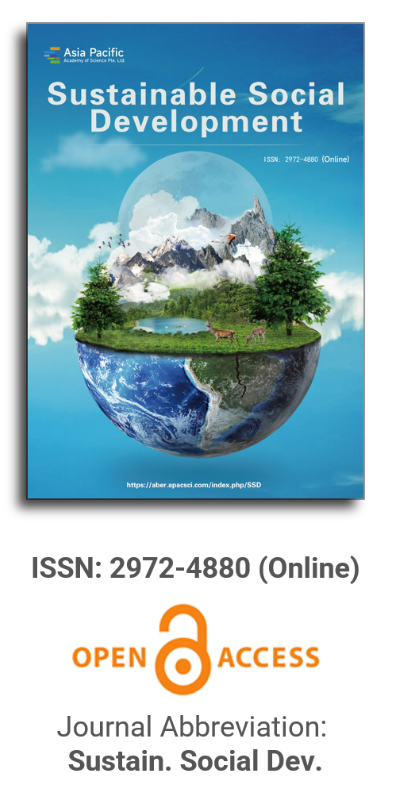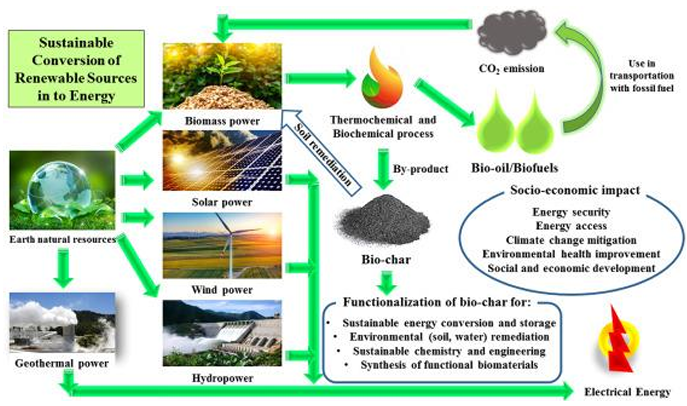
Asia Pacific Academy of Science Pte. Ltd. (APACSCI) specializes in international journal publishing. APACSCI adopts the open access publishing model and provides an important communication bridge for academic groups whose interest fields include engineering, technology, medicine, computer, mathematics, agriculture and forestry, and environment.

Gender role in agroforestry adoption and management in Garo ethnic community of Bangladesh
Vol 3, Issue 2, 2025
Download PDF
Abstract
Agroforestry holds significant promise for offering substantial benefits to the Garo ethnic community, who are recognized as one of the primary indigenous groups in the Madhupur region with distinct cultural identities. Given the integral role of community involvement in agroforestry management, particularly in relation to gender dynamics, this study sought to analyze the gender role of Garo men and women in adopting and managing agroforestry practices. Data were gathered from 70 Garo tribal farmers (37 male and 33 female) across six villages practicing various agroforestry techniques in the Madhupur Sal forest area. Using a mixed-methods approach that incorporated semi-structured questionnaires, focus group discussions, key informant interviews, and direct observations, the study identified prevalent agroforestry practices featuring various tree-crop combinations. These included Akashmoni (Acacia auriculiformis) paired with Pineapple (Ananas comosus) and Ginger (Zingiber officinale), as well as other combinations such as Akashmoni-Pineapple-Turmeric, Akashmoni-Pineapple-Papaya, and Akashmoni-Pineapple-Aroid. Both men and women exhibited a moderate to high level of involvement in agroforestry programs, with decision-making processes shared between genders. However, challenges were encountered, particularly by women from ethnic minority backgrounds, including limited technical knowledge, financial resources, and labor availability. Despite these obstacles, both Garo men and women expressed a keen interest in agroforestry practices as a means to enhance their income and livelihoods, forming gender-based partnerships to address associated challenges in a changing socioeconomic landscape.
Keywords
References
- Rahman MA, Tani M, Asahiro K, Ullah SA. Species composition, diversity and productivity of homesteads in southeastern Bangladesh. Small Scale For. 2017; 16(3): 295–309. doi: 10.1007/ s11842-016-9356-8
- Leakey RR, Simons AJ. The domestication and commercialization of indigenous trees in agroforestry for the alleviation of poverty. Agroforestry Syst; 1998.
- Hasan MN, Hossain MS, Bari MA, Islam MR. Agricultural land availability in Bangladesh. Soil Resources Development Institute; 2013.
- Huxley PA. Education for Agroforestry. United Nations University; 1984.
- Eneji AE, Irshad M, Inanaga S. Agroforestry as a tool for combating soil and environmental degradation: Examples from the Tropics. Sand Dune Res; 2004.
- FAO. Agroforestry Available online: https://www.fao.org/agroforestry/en#:~:text=FAO%20aims%20to%20support%20sustainable,the%20scaling%2Dup%20of%20agroforestry. (accessed on 10 August 2024).
- Saha S, Sharmin A, Biswas R, Ashaduzzaman M. Farmers’ perception and adoption of agroforestry practices in Faridpur district of Bangladesh. International Journal of Environment, Agriculture and Biotechnology. 2018.
- Kiptot, E., Franzel, S., and Degrande, A. Gender, agroforestry and food security in Africa. Current Opinion in Environmental Sustainability; 2014.
- Amnesty International Indigenous Peoples. Amnesty International 2009. Available online: https://www.amnesty.org/en/what-we-do/indigenous-peoples/ (accessed on 10 August 2024).
- Burling R. The Strong Women of Modhupur. University Press Limited; 1997.
- Muhammed N, Chakma S, Masum MH, et al., A case study on the Garo ethnic people of the Sal (Shorea robusta) forests in Bangladesh. International Journal of Social Forestry. 2011.
- Alam MK. Diversity in the woody flora of sal (Shorea robusta) forests of Bangladesh. Bangladesh Journal of Forest Science. 1995.
- Hasan M, Rahim MA, Islam AKMS, et al. Effect of management practices on the growth and yield of lime and lemon. International Journal of Bioscience. 2016.
- Kibria MG, and Saha N. Analysis of existing agroforestry practices in Madhupur Sal forest: an assessment based on ecological and economic perspectives. Journal of Forestry Research. 2011.
- Zabala NQ. Plantation silviculture. Bangladesh: Institute of Forestry and Environmental Science. University of Chittagong; 1991.
- Kiptot E, Franzel S, Degrande A. Gender, agroforestry and food security in Africa. Current Opinion in Environmental Sustainability; 2014.
- Kiptot, E., Franzel, S. Gender and agroforestry in Africa: a review of women’s participation. Agroforestry systems; 2012.
- Eahra, E. Assessment of the role of women in agroforestry systems: a case study of Marangu and Mamba in Kilimanjaro region, Tanzania. World Agroforestry Centre; 2001.
- Catacutan D, Naz F. Gender roles, decision-making and challenges to agroforestry adoption in Northwest Vietnam. International Forestry Review. 2015; 17(4): 22-32. doi: 10.1505/146554815816086381
- Hanum IM, Qurniati R, Herwanti S. The Role of Rural Forest Women in Increasing the Household Income. Jurnal Sylva Lestari. 2018.
- Kiptot E. Gender roles, responsibilities, and spaces: implications for agroforestry research and development in Africa. Intl. For Rev. 2015; 17(4): 11-21. doi: 10.1505/146554815816086426
- Akther R, Hussain S, Morshed M, et al. Gender Role in Agricultural Technology: A Case of Rural Bangladesh. Asian Journal of Agricultural Extension, Economics and Sociology. 2021.
- Ali A, Niehof A. Changing gender roles in household food security and rural livelihoods in Bangladesh. Sustainable poverty reduction in less-favoured areas: Problems, options, and strategies; 2007.
Supporting Agencies
Copyright (c) 2025 Author(s)
License URL: https://creativecommons.org/licenses/by/4.0/

This site is licensed under a Creative Commons Attribution 4.0 International License (CC BY 4.0).

Prof. Kittisak Jermsittiparsert
University of City Island, Cyprus






It is with deep regret that we announce the cancellation of the Forum on Sustainable Social Development & Computing and Artificial Intelligence, originally scheduled for June 15, 2025.

